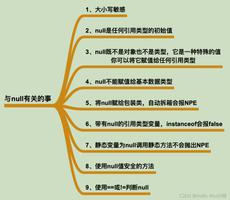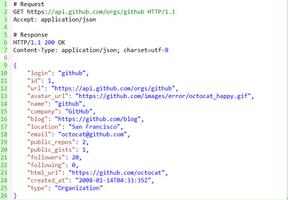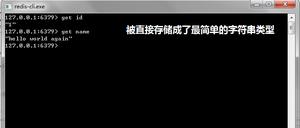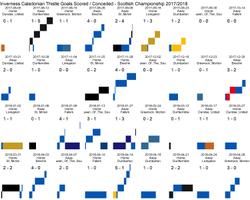Java并发包分析——BlockingQueue

之前因为找实习的缘故,博客1个多月没有写了。找实习的经历总算告一段落,现在重新更新博客,这次的内容是分析Java并发包中的阻塞队列
关于阻塞队列,我之前是一直充满好奇,很好奇这个阻塞是怎么实现。现在我们先看一个该抽象类的实现类ArrayBlockingQueue。下面全部的代码均在github
ArrayBlockingQueue
ArrayBlockingQueue顾名思义是一种数组形式的阻塞队列,其自然就有数组的特点,即队列的长度不可改变,只有初始化的时候指定。
下面,我们看一下例子。
public class ArrayBlock { private BlockingQueue<String> blockingQueue;
public ArrayBlock(){
blockingQueue = new ArrayBlockingQueue<String>(3);
}
public BlockingQueue<String> getBlockingQueue() {
return blockingQueue;
}
}
创建一个大小为3的ArrayBlockingQueue,下面是一个生产者和消费者,通过ArrayBlockingQueue实现生产者/消费者模型。
public class Producer extends Thread { private BlockingQueue<String> blockingQueue;
@Override
public void run() {
super.run();
for (int i = 0 ; i < 5;i++) {
try {
blockingQueue.put(i + "");
System.out.println(getName() + " 生产数据");
} catch (InterruptedException e) {
e.printStackTrace();
}
}
}
public Producer(ArrayBlock arrayBlock){
this.setName("Producer");
blockingQueue = arrayBlock.getBlockingQueue();
}
}
public class Costumer extends Thread{
private BlockingQueue<String> blockingQueue;
public Costumer(ArrayBlock arrayBlock) {
blockingQueue = arrayBlock.getBlockingQueue();
this.setName("Costumer");
}
@Override
public void run() {
super.run();
while (true) {
try {
Thread.sleep(6000);
String str = blockingQueue.take();
System.out.println(getName() + " 取出数据 " + str);
} catch (InterruptedException e) {
e.printStackTrace();
}
}
}
}
测试过程就不放了,直接放出结果:
Producer 生产数据Producer 生产数据
Producer 生产数据
Costumer 取出数据 0
Producer 生产数据
Costumer 取出数据 1
Producer 生产数据
Costumer 取出数据 2
Costumer 取出数据 3
Costumer 取出数据 4
这可以看出put方法与take方法均是阻塞的方法。当队列已经满的时候,就会阻塞放入方法,当队列为空的时候,就会阻塞取出方法。
下面,我们主要看这个两个方法,究竟是如何实现阻塞的。
** put方法 **
public void put(E e) throws InterruptedException { checkNotNull(e);
final ReentrantLock lock = this.lock;
lock.lockInterruptibly();
try {
while (count == items.length)
notFull.await();
enqueue(e);
} finally {
lock.unlock();
}
}
put方法是将元素放入到队列中,这里面可以看出是用过Lock类与Condition类来实现的,即通过等待/通知机制实现的阻塞队列。这里notFull是一个条件,当队列已经满的时候,就会执行await方法,如果没有满就执行入队(enqueue)方法。这里,判断队列已满用的是count == items.length。接下来,我们看一下take方法,来看看取数据的阻塞。
** take方法**
public E take() throws InterruptedException { final ReentrantLock lock = this.lock;
lock.lockInterruptibly();
try {
while (count == 0)
notEmpty.await();
return dequeue();
} finally {
lock.unlock();
}
}
这里,与put方法类似,当元素为0时,就会执行await方法,上面方法中都没有直接说明signal方法的执行。其实该方法是入队与出队的方法中实现的。也就是当执行notFull.await()时,是通过dequeue()方法来通知停止等待的,可以放入元素。当执行到notEmpty.await()时,是通过enqueue来通知结束阻塞,可以取出元素。
LinkedBlockingQueue
LinkedBlockingQueue顾名思义是一个链表形式的阻塞队列,不同于ArrayBlockingQueue。如果不指定容量,则默认是Integer.MAX_VALUE。也就是说他是一个无界阻塞队列。他的例子与上面的类似,但是其put与take方法实现不同于ArrayBlockingQueue,但两者大致思路一致。我们只看一下put实现:
** put方法**
public void put(E e) throws InterruptedException { if (e == null) throw new NullPointerException();
// Note: convention in all put/take/etc is to preset local var
// holding count negative to indicate failure unless set.
int c = -1;
Node<E> node = new Node<E>(e);
final ReentrantLock putLock = this.putLock;
final AtomicInteger count = this.count;
putLock.lockInterruptibly();
try {
/*
* Note that count is used in wait guard even though it is
* not protected by lock. This works because count can
* only decrease at this point (all other puts are shut
* out by lock), and we (or some other waiting put) are
* signalled if it ever changes from capacity. Similarly
* for all other uses of count in other wait guards.
*/
while (count.get() == capacity) {
notFull.await();
}
enqueue(node);
c = count.getAndIncrement();
if (c + 1 < capacity)
notFull.signal();
} finally {
putLock.unlock();
}
if (c == 0)
signalNotEmpty();
}
这里阻塞的本质实现也是通过Condition类的等待/通知机制。但是有几点不同:
第一 这里用了一个原子类的count计数,官方的给的注释是即使没有锁来提供保护,也能保证线程安全,实现wait guard。
第二 ArrayBlockingQueue的通知是在入队与出队的方法中,LinkedBlockingQueue则不是,并且插入之后不满的时候,还有通知其他await的线程。
第三 ArrayBlockingQueue的lock一直是一个,也就是put/take是用的一个锁,放与取无法实现并行。但是LinkedBlockingQueue是两个锁,放一个锁,取一个锁,可以实现put/take的并行,要高效一些。
SynchronousQueue
SynchronousQueue顾名思义是同步队列,特点不同于上面的阻塞队列,他是一个无界非缓存的队列,准确说他不存储元素,放入的元素,只有等待取走元素之后才能放入。也就是说任意时刻:
- isEmpty()法永远返回是true
- remainingCapacity() 方法永远返回是0
- remove()和removeAll() 方法永远返回是false
- iterator()方法永远返回空
- peek()方法永远返回null
元素并不会被生产者存在队列中,而是直接生产者与消费者进行交互。
其实现是利用无锁算法,可以参考SynchronousQueue实现
还有一点需要注意,同步队列支持公平性与非公平性。公平性是利用队列来管理多余生产者与消费者,非公平性是利用栈来管理多余生产者与消费者。
以上是 Java并发包分析——BlockingQueue 的全部内容, 来源链接: utcz.com/z/394163.html









